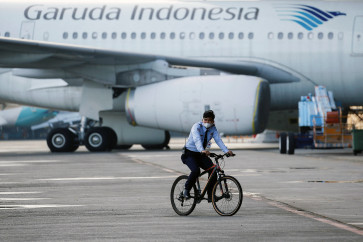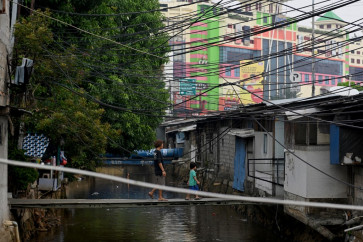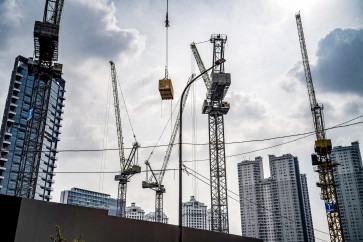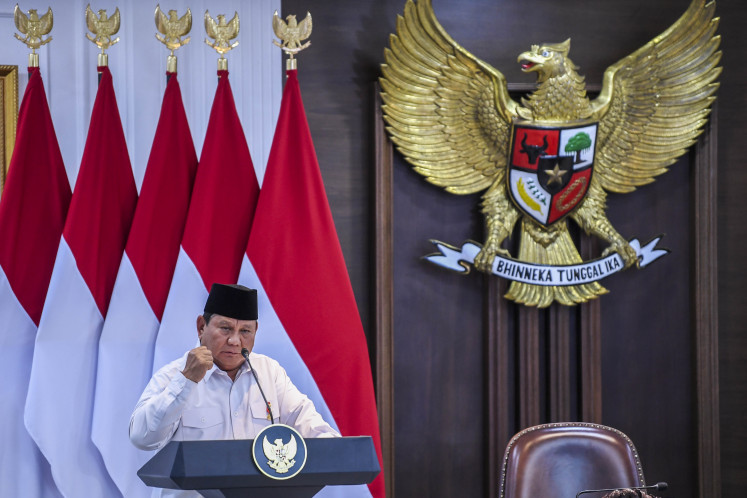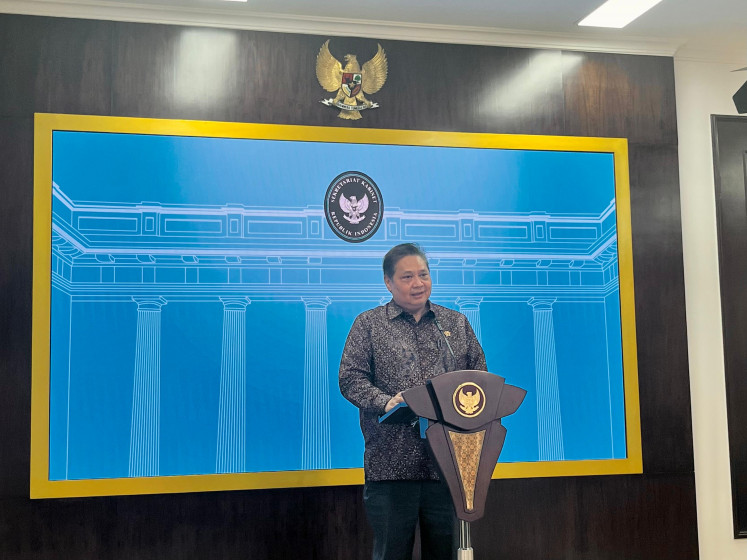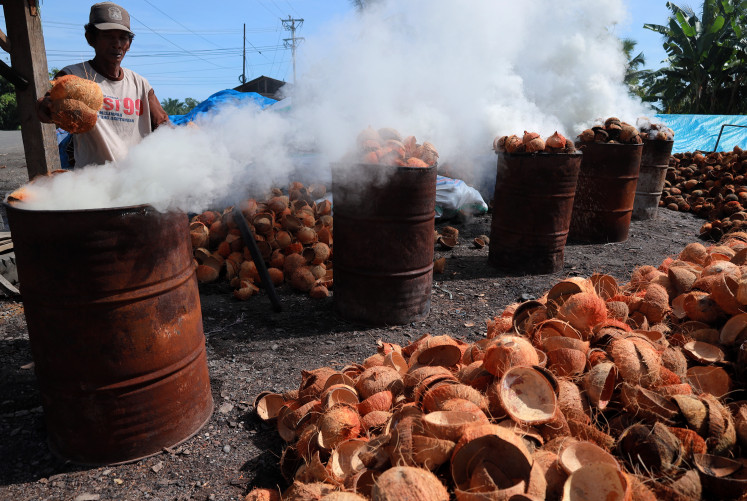Indonesia's creaky railways may get 'shinkansen' touch
Smooth: A shinkasen bullet train approaches Tokyo Station in Japan
Change text size
Gift Premium Articles
to Anyone

S
span class="caption">Smooth: A shinkasen bullet train approaches Tokyo Station in Japan. Some bullet trains run at a maximum speed of 300 kilometers per hour and passengers have to look out the window to grasp how fast they're going. Bloomberg/Tomohiro Ohsumi
Jakarta just recently kicked off its first mass rapid transit (MRT) construction. But Indonesia, with its creaky railways, is still some decades behind Japan, which is known for its railway business.
A massive network of subways, commuter inter-city and bullet trains is the backbone of Japan's transportation system. With a total length of approximately 20,000 kilometers, it connects almost every corner of Japan's four major islands.
A seven-minute commuter ride connecting Tokuyama and Kudamatsu in Yamaguchi Prefecture looks not all that different from a Jakarta commuter train. But, once you step into the station, the difference emerges: its consistent punctuality.
Probably most famous is the shinkansen bullet train. Passengers on a 'Nozomi' train need only four-and-a-half hours to reach Tokuyama city in Yamaguchi Prefecture, which is 982.7 kilometers from Tokyo. Compare that to the 10 to 12 hours it takes to go from Jakarta to Surabaya, around 730 kilometers, on an express train.

The Nozomi (which in Japanese means 'hope') runs at a maximum speed of 300 kilometers per hour, and the ride is smooth enough that passengers have to look out the window to grasp how fast they're going.
Halfway to Tokuyama, between Tokyo and Shin-Osaka, lies the oldest shinkansen line, the Tokaido, opened in 1964.
Today's railway industry in Japan is run by five rolling stock companies and around three signaling system companies.
One of those companies is Hitachi, well known in Indonesia as a home appliances maker and excavator equipment manufacturer.
After securing a contract to supply 17 trains, an accompanying signaling and power supply system and a five-year maintenance contract for Vietnam's first urban railway in Ho Chi Minh City in June, Hitachi is now eyeing train projects in Indonesia.
During a visit to a factory in Kasado, general manager of rail systems at Hitachi Takuya Yamakawa said that the company 'participated in the pre-qualification for the Jakarta MRT project's rolling stock and signaling system and now is waiting for the result'.
Indonesia's old existing railways represent a business prospect for the company. Hitachi said they expected to upgrade the lines by providing signaling systems.


Hitachi, which produces some types of shinkansen, is also exploring the possibility of participating in Indonesia's new high-speed train project, as a Japan International Cooperation Agency-funded feasibility study on adopting shinkansen technology in Java is slated to begin in January.
Such Japanese bullet trains could bring passengers from Jakarta to Bandung, which are 150 kilometers apart, in less than one hour, or from Jakarta to Surabaya in less than three.
Japan has been pushing for its technology to be applied overseas to make infrastructure more efficient, including by building high-speed railway systems.
As Hitachi aims to increase its overseas revenue railway to 120 billion yen (US$1.2 billion) in 2015, or 60 percent from its total targeted 200 billion yen in to railway revenue ' which is up from 38.1 billion yen in 2012, or 26 percent from total railway revenue of 146.7 billion yen ' it seeks to expand what it calls total business activity in ASEAN.
Although ASEAN and Indonesia may be growing markets for Japan, challenges remain for Hitachi, and probably for other Japanese companies, on how to 'localize' ' that is, apply the technology to the local condition of each country, where there may be a lack of skilled manpower and education.
In Indonesia's case, Hitachi president Hiroaki Nakanishi recognized that the lack of infrastructure is the key challenge.
'Indonesia [first] needs to expand infrastructure; not only in transportation, but in other areas since Indonesia is a huge country,' he said. 'Those kinds of businesses [including power transmission] are very important for us and for Indonesia as well.'
But it is better late than never. And hope for improving Indonesia's public transportation services is still there. As Japan looks to expand, maybe Indonesia can learn from the master.

